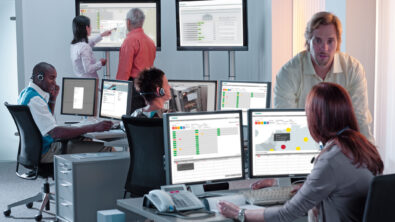What if …?

How to engineer our best possible future
Back to business as usual? Regardless of how or even whether we’ve settled back into our old routines after the coronavirus shock, the pandemic offers us an opportunity to reshuffle the deck. I’m now seeing customers and business partners in re-invent mode. Many are using the crisis to critically examine their business model, probe their supplier structures, and put their value chains to a stress test. Good timing? An historic opportunity!
At a moment such as this, in-depth simulations are not only welcome, they may actually be urgently needed. The sudden economic halt forced upon us in recent months threw us all into a ditch. Who will help us back onto our feet? How can we get our businesses up and running again as quickly as possible? What if …? Well, what would actually happen if, after the corona timeout, we found the courage to try new things or do old things differently?
Seizing the opportunities of the crisis without provoking a new crisis
To seize the opportunities of the crisis without immediately provoking a new crisis, we must be able to try out new ideas and strategies without risk. And at a manageable price. One thing is for sure: After this state of emergency, we need to get a clear picture of how to move our businesses forward. And how we intend to deal with future situations that no supply chain manager had anticipated.
What if …? For those who want to explore this exciting question under real-world conditions, I can recommend a brilliant sparring partner: the digital twin. The digital twin has its origins in the industrial sector, where for years it has been doing great work providing virtual function-testing of new machinery and systems. The use of CAD and 3D modeling in digital product development is just one example.
Think big! Making the future predictable
The digital twin has since found its way into the logistics industry as a systemic consultant able to successfully mimic performance and execution. Here it can fine-tune logistics networks, visualize the effects on supply chains, and apply actual data to show how changes would impact existing processes, structures, and quality indicators.
Under these conditions, it becomes possible to achieve perfect predictions through digital simulation. Like image editing software that instantaneously previews changes in cropping, color saturation, and lighting, the digital twin gives a real-time glimpse into how changes will play out in your logistics. Would you like to be able to predict the future? Think big!
Defining the path to success
The nice thing about this digital consulting model is that it also works the other way around. If you project your desired results into the future, the digital twin will show you how to get there. All the parameters that define the path to success can be identified precisely in the digital model of reality. This model can even be used to make the benefits of digital technology tangible.
At Siemens, we’ve always seen the digital twin as a partner. It has accompanied us and our customers on our journey to the innovations of “Industry 4.0.” Whether it’s about digital transformation, automation, or artificial intelligence: The digital twin shows its strengths in nearly every application. Its support is vital to nearly every research project.
Shaping forward-looking logistics solutions
“The best way to predict the future is to shape it yourself”: Those words, so apt today, were uttered in the last century by French economist Jean Fourastié. In my view, the best time to start shaping tomorrow’s logistics solutions and services is now.
What if …? We at Siemens Digital Logistics are ready to assist anyone who wishes to put this question to the digital twin.


